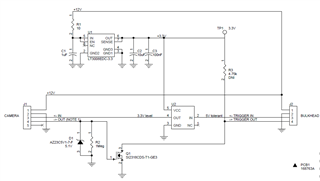Hello,
I am using the above part number level shifter to downshift a 5V TTL signal to a 3.3V signal. I've broken a few of these chips, but when I measure the input and output lines I do not see anything happening that should be damaging the chip. The only thing I can think of is that when I turn the system off, the 3.3V VCC turns off about 0.4 sec before the 5V on the input pin. Could this cause damage to the chip?
Thank you


